Abstract
Five heterozygotes for ty-neg OCA had absent or markedly reduced hairbulb tyrosinase activity, when compared to normally pigmented control subjects. Clinically, all five were fully pigmented and could not be distinguished from the normal control subjects. It is proposed that the quantitative hairbulb tyrosinase assay can be used to detect heterozygotes for ty-neg OCA. A mechanism to explain the low levels of activity in the hairbulbs from heterozygotes is discussed.
Full text
PDF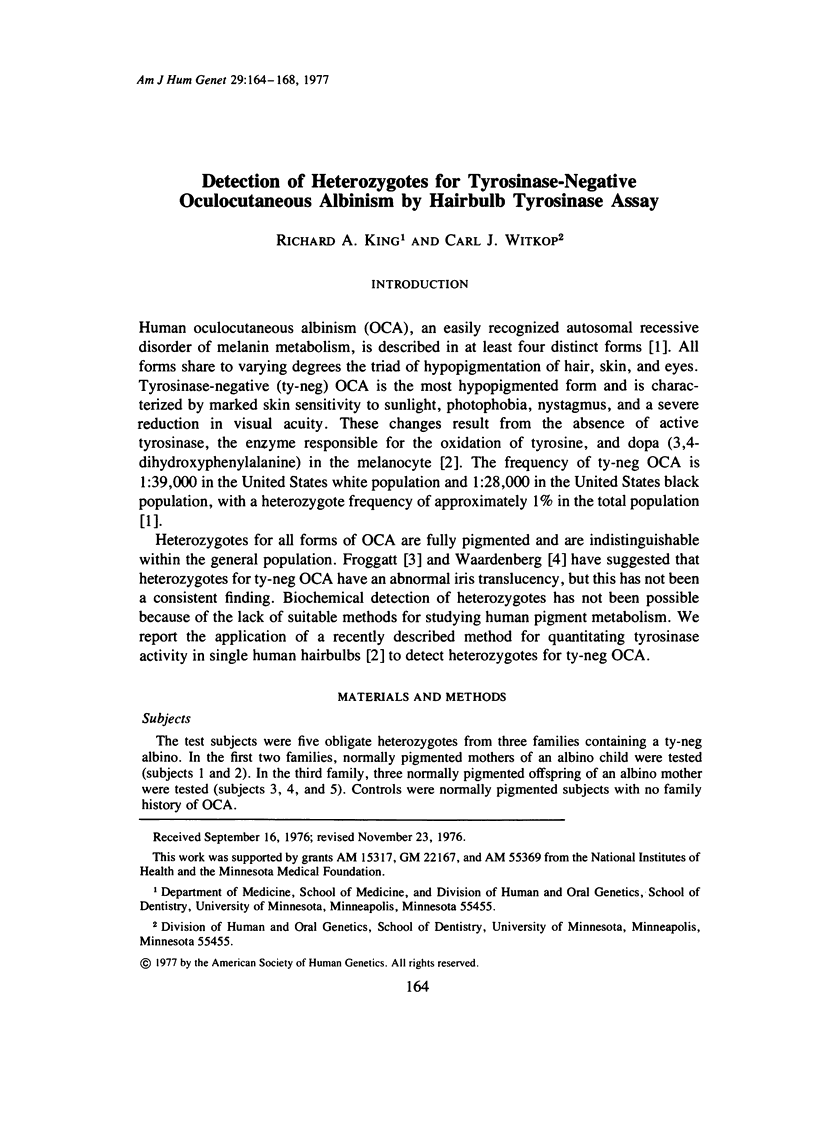
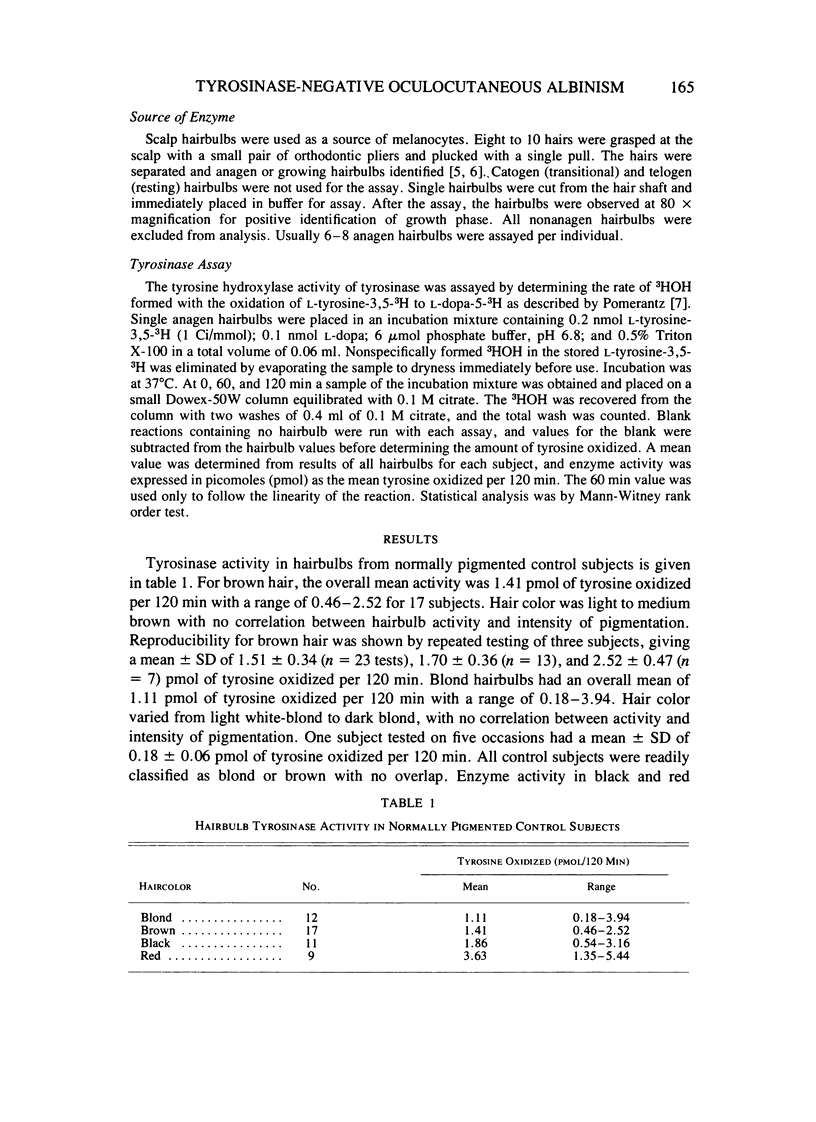
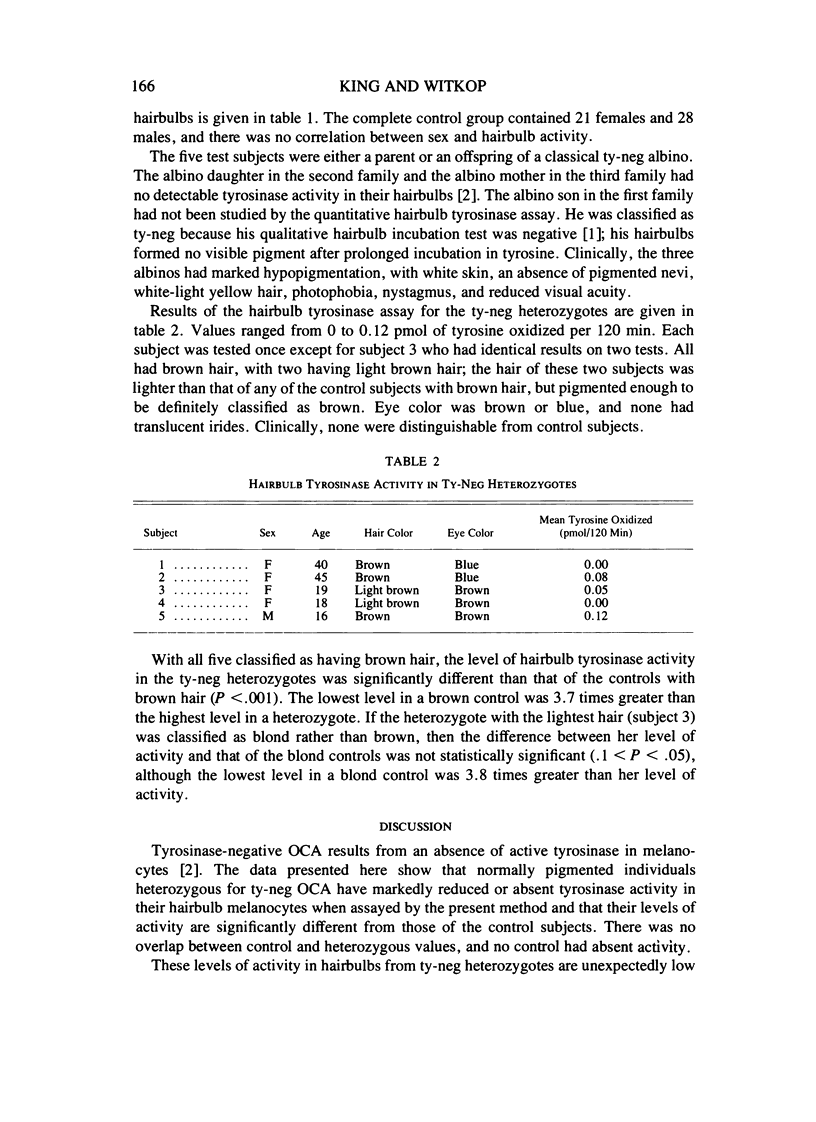
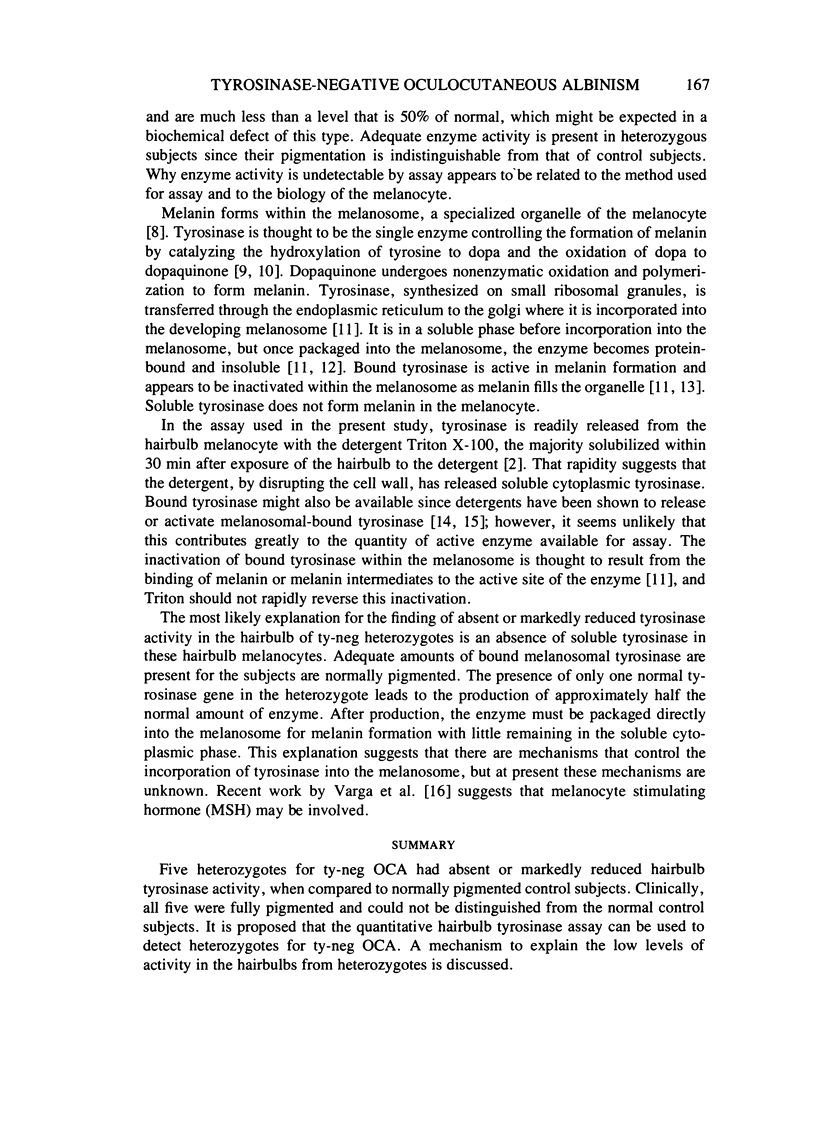
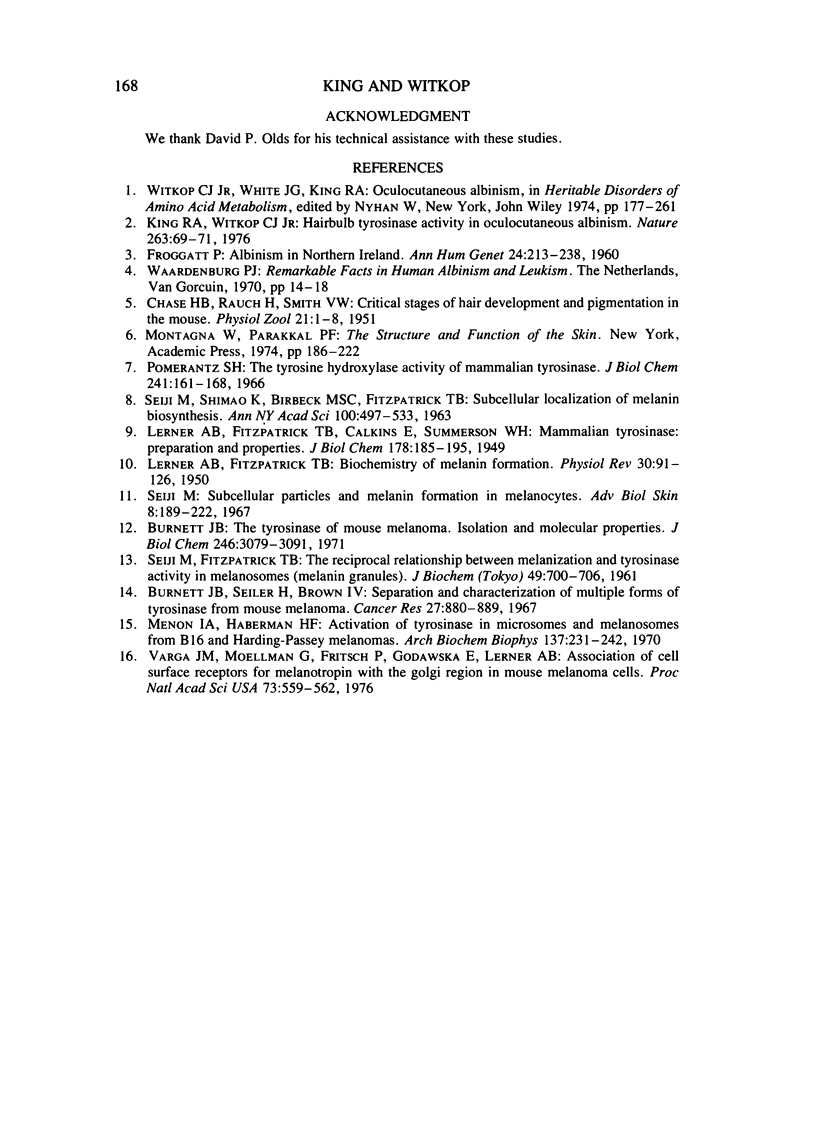
Selected References
These references are in PubMed. This may not be the complete list of references from this article.
- Burnett J. B., Seiler H., Brown I. V. Separation and characterization of multiple forms of tyrosinase from mouse melanoma. Cancer Res. 1967 May;27(5):880–889. [PubMed] [Google Scholar]
- Burnett J. B. The tyrosinases of mouse melanoma. Isolation and molecular properties. J Biol Chem. 1971 May 25;246(10):3079–3091. [PubMed] [Google Scholar]
- CHASE H. B., RAUCH R., SMITH V. W. Critical stages of hair development and pigmentation in the mouse. Physiol Zool. 1951 Jan;24(1):1–8. doi: 10.1086/physzool.24.1.30152098. [DOI] [PubMed] [Google Scholar]
- FROGGATT P. Albinism in Northern Ireland. Ann Hum Genet. 1960 Jul;24:213–238. doi: 10.1111/j.1469-1809.1960.tb01734.x. [DOI] [PubMed] [Google Scholar]
- King R. A., Witkop C. J., Jr Hairbulb tyrosinase activity in oculocutaneous albinism. Nature. 1976 Sep 2;263(5572):69–71. doi: 10.1038/263069a0. [DOI] [PubMed] [Google Scholar]
- LERNER A. B., FITZPATRICK T. B. Biochemistry of melanin formation. Physiol Rev. 1950 Jan;30(1):91–126. doi: 10.1152/physrev.1950.30.1.91. [DOI] [PubMed] [Google Scholar]
- Menon I. A., Haberman H. F. Activation of tyrosinase in microsomes and melanosomes from B16 and Harding-Passey melanomas. Arch Biochem Biophys. 1970 Mar;137(1):231–242. doi: 10.1016/0003-9861(70)90430-3. [DOI] [PubMed] [Google Scholar]
- Pomerantz S. H. The tyrosine hydroxylase activity of mammalian tyrosinase. J Biol Chem. 1966 Jan 10;241(1):161–168. [PubMed] [Google Scholar]
- SEIJI M., FITZPATRICK T. B. The reciprocal relationship between melanization and tyrosinase activity in melanosomes (melanin granules). J Biochem. 1961 Jun;49:700–706. doi: 10.1093/oxfordjournals.jbchem.a127360. [DOI] [PubMed] [Google Scholar]
- SEIJI M., SHIMAO K., BIRBECK M. S., FITZPATRICK T. B. Subcellular localization of melanin biosynthesis. Ann N Y Acad Sci. 1963 Feb 15;100:497–533. [PubMed] [Google Scholar]
- Varga J. M., Moellmann G., Fritsch P., Godawska E., Lerner A. B. Association of cell surface receptors for melanotropin with the Golgi region in mouse melanoma cells. Proc Natl Acad Sci U S A. 1976 Feb;73(2):559–562. doi: 10.1073/pnas.73.2.559. [DOI] [PMC free article] [PubMed] [Google Scholar]


